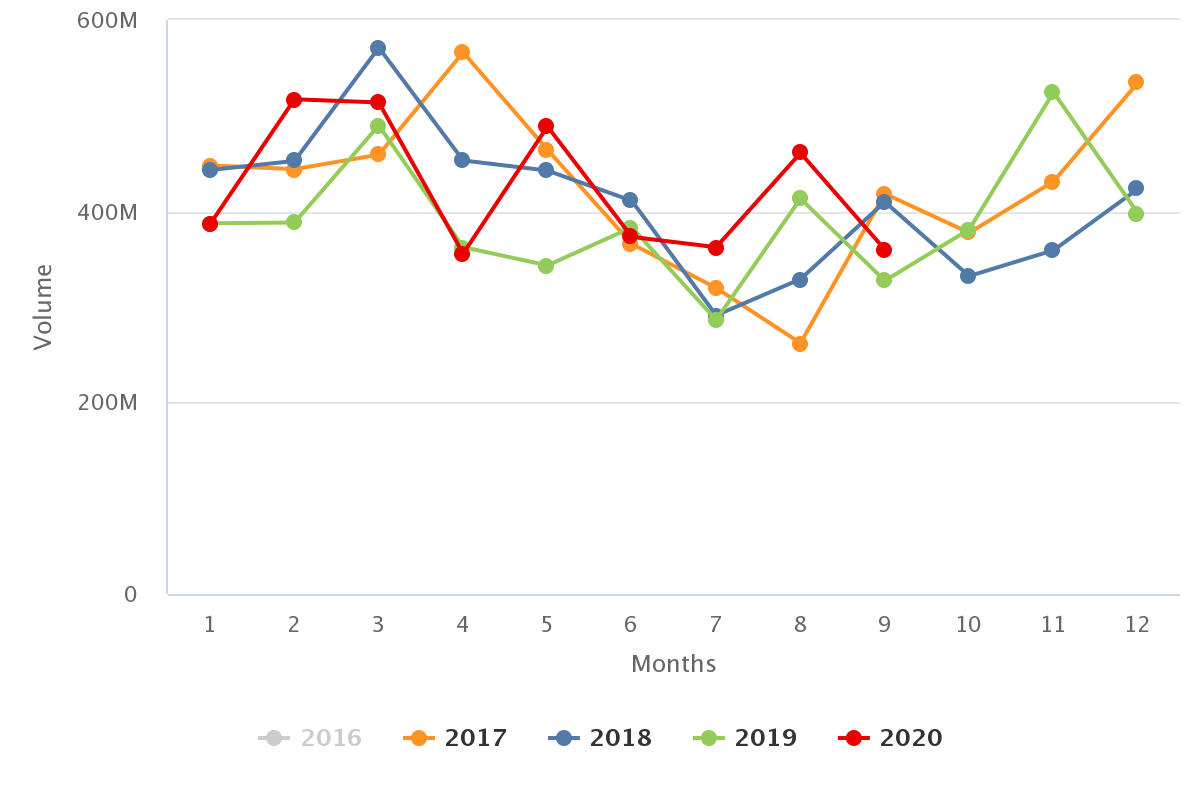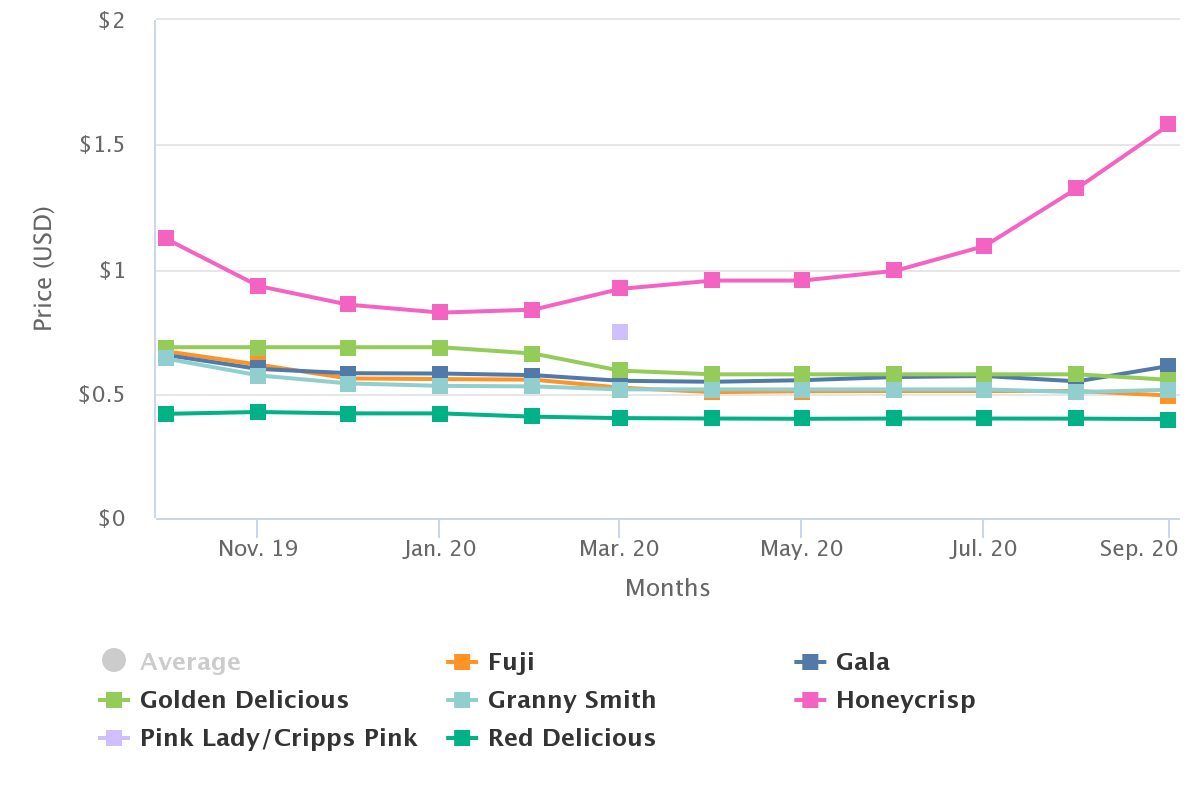Washington Apple Commission says crop will be lighter

Overview of the Washington Apple season, complemented by charts from Agronometrics. Original published on October 08, 2020.
Source: USDA Market News via Agronometrics.
(Agronometrics users can view this chart with live updates here)
That forecast, from the Washington State Tree Fruit Association on Aug. 1, was 134 million 40-pound box equivalents. According to a Washington Apple Commission Oct. 8 news release on the revision, the harvest is about 70% over.
The commission discussed the harvest revision during a virtual Oct. 8 board meeting.
Contributing factors include an alternate bearing season lightening the number of apples per tree, a recent windstorm and more selective picking as growers work to improve pack-outs in the warehouse, according to the release.
“It is the growing consensus that the 2020 apple crop will be lower than earlier published estimates,” James Foreman, Washington Apple Commission chairman, said in the release. “This can be attributed to both a reduction in the quantity of bulk bins harvested, as well as lower conversion yields to packed boxes.”
Sizes are trending smaller than last season, but it depends on the region, according to the commission.
There are 1,260 apple growers in Washington. The state’s eight main varieties are gala, red delicious, fuji, Honeycrisp, granny smith, cripps pink (Pink Lady brand), golden delicious and Cosmic Crisp, which is a new apple whose volumes will sharply increase.
Source: USDA Market News via Agronometrics.
(Agronometrics users can view this chart with live updates here)
The News in Charts is a collection of stories from the industry complemented by charts from Agronometrics to help better tell their story.
Access the original article with this (Link)








